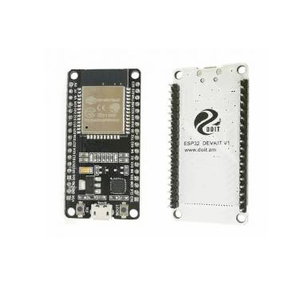
DOIT ESP32 DEVKIT V1 is a development board based on the ESP32 microcontroller using XTENSA architecture.
This board features a maximum CPU frequency of 240 MHz and 4MB flash memory.
About DOIT ESP32 DEVKIT V1
❓ Not sure if this is your board? Or you have a similar clone?
Check out the ESP32 30-Pin Generic Clone Guide - it covers all the common variations and helps you identify which board you actually have!
The DOIT ESP32 DEVKIT V1 is a versatile development board built around the proven Espressif ESP32-WROOM-32 module. It packs dual-core processing power, Wi-Fi 802.11 b/g/n and Bluetooth 4.2 (BR/EDR + BLE) into a slim, breadboard-friendly 30-pin package-perfect for rapid IoT prototyping. 📡
An on-board CP2102 USB-to-UART converter and auto-reset circuitry let you plug in, program, and debug over Micro-USB with zero fuss. 🔌
Power options are flexible: feed the board via
VIN (5 V), the Micro-USB port, or tap the regulated 3V3 rail for low-power projects. A high-efficiency LDO keeps everything stable. ⚡️Development conveniences include a dedicated EN (reset) button 🔁 and a BOOT (IO0) button for easy firmware flashing and download-mode entry. 🚀
With rich peripherals-ADC, DAC, PWM, capacitive-touch, I²C, SPI, UART and more-the DOIT ESP32 DEVKIT V1 is ready to drive sensors, displays, motors, or anything your next connected gadget requires. ⚙️
Where to Buy DOIT ESP32 DEVKIT V1
Prices are subject to change. We earn from qualifying purchases as an Amazon Associate.
📋 Technical Specifications
Complete technical specification details for DOIT ESP32 DEVKIT V1
🔌 USB
🛰️ Connectivity
🧠 Microcontroller
✨ Features & Pins
DOIT ESP32 DEVKIT V1 Board Dimensions
Physical measurements for DOIT ESP32 DEVKIT V1
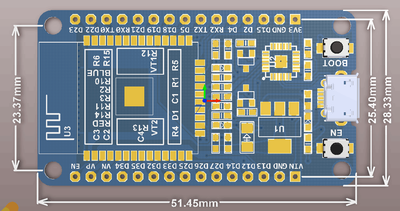
DOIT ESP32 DEVKIT V1 Pinout Diagram
Complete pin reference for DOIT ESP32 DEVKIT V1
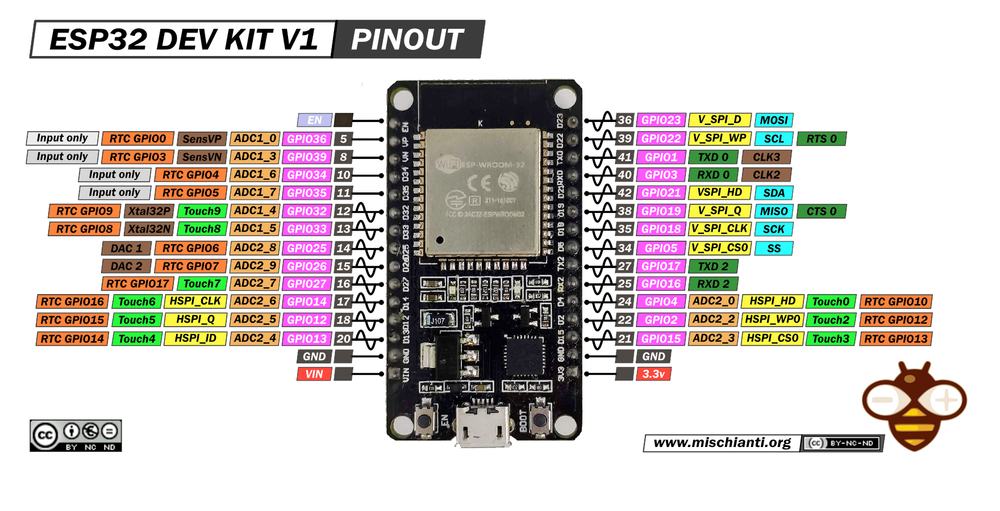
The DOIT ESP32 DEVKIT V1 pinout exposes nearly the entire feature set of the ESP32 on two easy-to-breadboard rows of 15 pins each.
Power rails include VIN (5 V) for USB or external input, a regulated 3V3 output, and several GND pins for solid reference.
Serial I/O: TX0 (GPIO1) and RX0 (GPIO3) link to the CP2102 for USB programming, while TX2 (GPIO17) and RX2 (GPIO16) give you a second hardware UART for sensors or GPS modules.
I²C defaults to SDA (GPIO21) and SCL (GPIO22), but any open GPIO can be reassigned in software.
SPI comes in two flavors: the default VSPI bus (MOSI GPIO23, MISO GPIO19, SCK GPIO18, CS GPIO5) and an alternate HSPI bus on GPIO12–GPIO15 for additional devices.
Analog & touch: Eight ADC1 channels reside on GPIO32–GPIO39, usable even when Wi-Fi is active. Extra ADC2 channels (e.g., GPIO0, 2, 4, 12–15, 25–27) are shared with Wi-Fi. Dual 8-bit DAC outputs sit on GPIO25 and GPIO26. Many of these pads double as capacitive-touch sensors for sleek, button-free interfaces.
Every GPIO can source PWM signals for LED dimming or motor control. Keep an eye on boot-strap pins-GPIO0, GPIO2, and GPIO15-which must be held in the correct state (usually HIGH) during reset for normal startup.
From robust power handling to multiple high-speed buses, the DOIT ESP32 DEVKIT V1 pinout gives makers and professionals alike the flexibility to build anything from simple sensor nodes to fully fledged connected products-all on a compact, breadboard-friendly board.
✅ Safe Pins to Use
These pins are safe for general GPIO usage without boot or system conflicts
💡 Why Are These Pins Safe?
⚠️ Pins to Avoid or Use with Caution
Reserved for critical functions. Misuse may cause boot failures, programming issues, or system conflicts.
Boot behavior & flash voltage
Low-level debugging interface
USB Serial/JTAG communication
Memory & PSRAM connections
Debugging & firmware uploads
| PIN | Label | Why Avoid | Type |
|---|---|---|---|
| IO1 | U0TXD (GPIO1) | Connected to on-board USB-UART for uploading and logs; drives serial output at boot, so using as GPIO can disrupt programming or console. | 🔌 USB |
| IO2 | GPIO2 | If driven HIGH on reset (while IO0 is LOW), selects an unsupported SDIO boot mode, causing boot failure. | 🛠️ Strapping |
| IO3 | U0RXD (GPIO3) | Used for receiving data from USB-UART (programming); also pulled HIGH at boot for console communication, so using as GPIO can disrupt uploads. | 🔌 USB |
| IO4 | GPIO4 | Sampled at reset for boot config; should not be driven at boot (affects boot mode timing). | 🛠️ Strapping |
| IO5 | GPIO5 | Must be HIGH during boot; if pulled LOW at reset, alters SDIO slave timing and may prevent normal boot. | 🛠️ Strapping |
| IO12 | MTDI (GPIO12) | Keep LOW during boot (internal PD); pulling HIGH at reset selects 1.8V flash mode, causing flash brownout if 3.3V flash is used. | 🛠️ Strapping |
| IO13 | MTCK (GPIO13) | Used for JTAG debugging (TCK); avoid using as GPIO if JTAG is needed. | 🪛 Other |
| IO14 | MTMS (GPIO14) | Used for JTAG debugging (TMS); driving it as GPIO may interfere with JTAG or produce spurious signals at boot. | 🪛 Other |
| IO15 | MTDO (GPIO15) | Keep HIGH during boot (internal PU); if LOW on reset, bootloader log is silenced and boot mode may change. | 🛠️ Strapping |
| IO16 | GPIO16 | Connected to internal PSRAM on PSRAM-enabled modules; not usable as GPIO on those modules. | ⚡ Flash |
| IO17 | GPIO17 | Connected to internal PSRAM on PSRAM-enabled modules; not usable as GPIO on those modules. | ⚡ Flash |
| IO34 | GPIO34 | Cannot be used as output (no drive capability); only suitable for analog/digital input. | 🪛 Other |
| IO35 | GPIO35 | Cannot be used as output; only suitable for input. | 🪛 Other |
| IO36 | GPIO36 (SENSOR_VP) | Cannot be used as output; only suitable for input (e.g., analog read). | 🪛 Other |
| IO39 | GPIO39 (SENSOR_VN) | Cannot be used as output; only suitable for input. | 🪛 Other |
Useful Links
Datasheets and resources for DOIT ESP32 DEVKIT V1
DOIT ESP32 DEVKIT V1 Custom Pin Mapping
Pin configuration and GPIO mapping for DOIT ESP32 DEVKIT V1
| Pin | Function | ESP Pin | I/O Type | Description |
|---|---|---|---|---|
| 1 | 5V | 5V | POWER INPUT | 5V power input for the board |
| 2 | GND | GND | POWER GROUNT | Ground connection |
| 3 | 3V3 | 3.3V | POWER OUTPUT | 3.3V power output |
| 5 | IO1 | GPIO1 | BIDIRECTIONAL | GPIO |
| 6 | IO2 | GPIO2 | BIDIRECTIONAL | GPIO, ADC |
| 7 | IO3 | GPIO3 | BIDIRECTIONAL | GPIO |
| 8 | IO4 | GPIO4 | BIDIRECTIONAL | GPIO, ADC |
| 9 | IO5 | GPIO5 | BIDIRECTIONAL | GPIO |
| 10 | IO12 | GPIO12 | BIDIRECTIONAL | GPIO, ADC |
| 11 | IO13 | GPIO13 | BIDIRECTIONAL | GPIO, ADC |
| 12 | IO14 | GPIO14 | BIDIRECTIONAL | GPIO, ADC |
| 13 | IO15 | GPIO15 | BIDIRECTIONAL | GPIO, ADC |
| 14 | IO16 | GPIO16 | BIDIRECTIONAL | GPIO |
| 15 | IO17 | GPIO17 | BIDIRECTIONAL | GPIO |
| 16 | IO18 | GPIO18 | BIDIRECTIONAL | GPIO |
| 17 | IO19 | GPIO19 | BIDIRECTIONAL | GPIO |
| 18 | IO21 | GPIO21 | BIDIRECTIONAL | GPIO |
| 19 | IO22 | GPIO22 | BIDIRECTIONAL | GPIO |
| 20 | IO23 | GPIO23 | BIDIRECTIONAL | GPIO |
| 21 | IO25 | GPIO25 | BIDIRECTIONAL | GPIO, ADC |
| 22 | IO26 | GPIO26 | BIDIRECTIONAL | GPIO, ADC |
| 23 | IO27 | GPIO27 | BIDIRECTIONAL | GPIO, ADC |
| 24 | IO32 | GPIO32 | BIDIRECTIONAL | GPIO, ADC |
| 25 | IO33 | GPIO33 | BIDIRECTIONAL | GPIO, ADC |
| 26 | IO34 | GPIO34 | INPUT | GPIO, ADC |
| 27 | IO35 | GPIO35 | INPUT | GPIO, ADC |
| 28 | IO36 | GPIO36 | INPUT | GPIO, ADC |
| 29 | IO39 | GPIO39 | INPUT | GPIO, ADC |
Pin Mappings
Complete pinout and GPIO mapping for DOIT ESP32 DEVKIT V1
| Pin | Analog | Touch | PWM | Other |
|---|---|---|---|---|
| 0 | A11 | T1 | ||
| 1 | PWM | TX | ||
| 2 | A12 | T2 | PWM | LED_BUILTIN |
| 3 | PWM | RX | ||
| 4 | A10 | T0 | PWM | |
| 5 | PWM | SS | ||
| 12 | A15 | T5 | PWM | |
| 13 | A14 | T4 | PWM | |
| 14 | A16 | T6 | PWM | |
| 15 | A13 | T3 | PWM | |
| 18 | PWM | SCK | ||
| 19 | PWM | MISO | ||
| 21 | PWM | SDA | ||
| 22 | PWM | SCL | ||
| 23 | PWM | MOSI | ||
| 25 | A18 | PWM | DAC1 | |
| 26 | A19 | PWM | DAC2 | |
| 27 | A17 | T7 | PWM | |
| 32 | A4 | T9 | PWM | |
| 33 | A5 | T8 | PWM | |
| 34 | A6 | |||
| 35 | A7 | |||
| 36 | A0 | |||
| 39 | A3 |
Default Tools & Configuration
Build and upload settings for DOIT ESP32 DEVKIT V1
| Setting | Value |
|---|---|
| Bootloader tool | esptool_py |
| Uploader tool | esptool_py |
| Network uploader tool | esp_ota |
| Bootloader address | 0x1000 |
| Flash mode | dio |
| Boot mode | dio |
| Maximum upload size | 1280 KB (1310720 bytes) |
| Maximum data size | 320 KB (327680 bytes) |
The DOIT ESP32 DEVKIT V1 uses esptool_py for uploads , esp_ota for OTA updates, and esptool_py bootloader at 0x1000.
Flash mode: dio | Boot mode: dio
Max sketch size: 1280 KB | Max data size: 320 KB
Similar Boards
Other development boards with ESP32 microcontroller
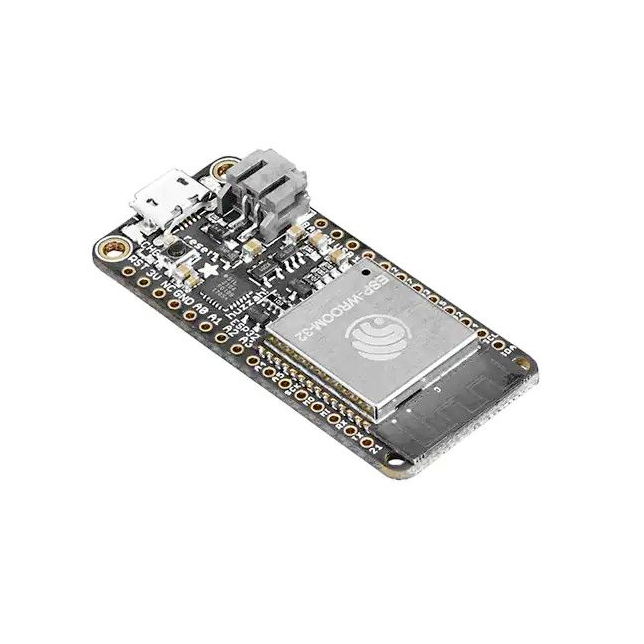
Adafruit ESP32 Feather
Adafruit ESP32 Feather development board is based on esp32 microcontroller and uses xtensa architecture.
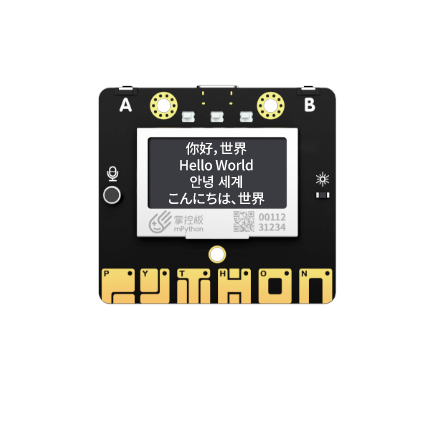
Labplus mPython
Labplus mPython development board is based on esp32 microcontroller and uses xtensa architecture.
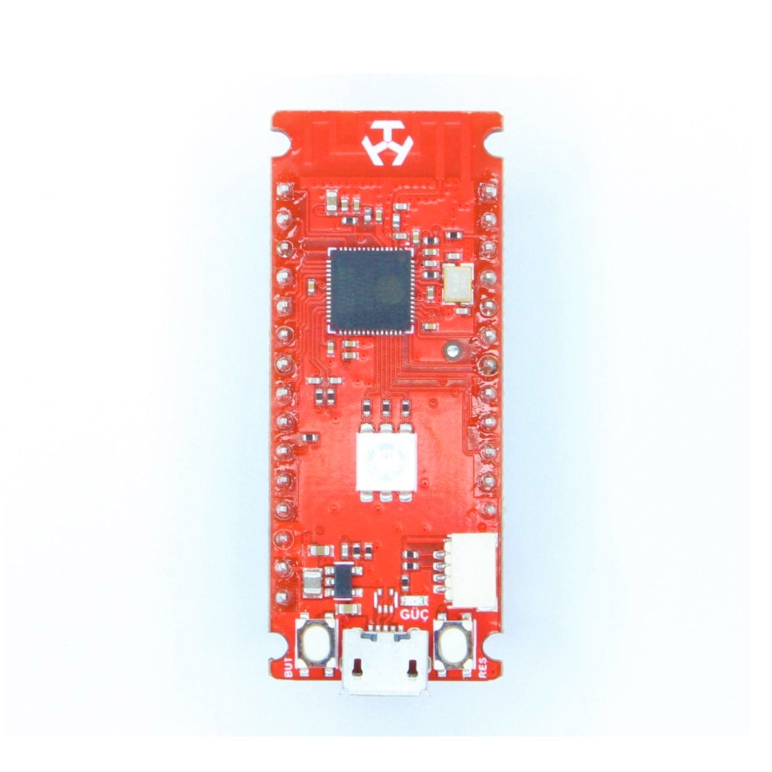
Deneyap Kart
Deneyap Kart development board is based on esp32 microcontroller and uses xtensa architecture.



